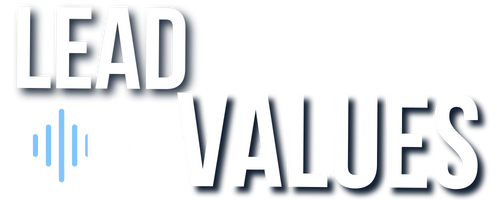Episode 64
64. Four Behaviors That Influence Communication On Your Team
Have you ever considered how you come across to others? Is it possible that the way you communicate might be creating some unintended issues between you and other’s?
On today’s episode I’m going to walk you through the 4 communication styles that exist in every team so you can have more win-win situations.
Hey, Team welcome back to Lead Thru Values.
If you’re new, I’m glad you’re here. You should know that the purpose of this podcast is to help be a better leader and give you practical tips to ensure that every person on your team has the skills, knowledge and confidence to do their job exceptionally well.
If you’re a returning listener, I want to thank you for giving me a few minutes of your day. I’m grateful for you.
Communication can be a real struggle in business as evidenced by these stats:
86% of employees and executives cite the lack of effective communication and collaboration as the main cause of workplace failures.
97% of employees believe that communication impacts their performance on a daily basis.
28% of employees cite poor communication as the reason for not delivering their work on time.
A Harvard Business Review report cites that 72% of employees feel their performance would improve if their managers gave them feedback on their work.
Another report by Trade Press Services shows that as many as 85% of employees claim they are most motivated when regularly updated about company news and information.
There’s a direct connection between communication and employee engagement. According to Gallup, team members with higher levels of engagement:
- Produce substantially better results
- Treat customers better and also attract new customers
- Are more likely to remain with their company
- Are overall healthier and less likely to experience burnout.
However, there are 4 prominent types of behavior that impact the effectiveness of communication in any company.
The first one is Passive Communication.
People who communicate in passive ways tend to give in. They want to keep the peace and they believe the best way to keep the peace is to remain quiet.
As a result, this damages their own self-esteem as the wrestle internally with speaking up or just staying quiet.
In other words, the Passive communicator views the situation as “You’re Ok, but I’m not.”
The second type of behavior style is Aggressive Communication.
People who communicate in an aggressive way look for ways to take advantage of a situation and/or another person.
They tend to talk people down in an effort to damage the other person’s self-esteem.
They use forceful tones, strong language and body language to attempt to intimidate their counterpart. They see it as adversarial or even combative.
In short, the outcome they want is that, “I’m OK and you’re not. And I don’t care.”
The third type of behavior style that impacts communication in the workplace is being Passive-Aggressive.
This one is the most toxic because what’s not being said is what’s actually being said. The passive-aggressive individual pretends to go along with the group.
- A decision.
- A course of action.
- A strategy.
But, they use tactics like gossip and back biting to tear others down.
They also use non verbal communication such as sighs and eye rolls that don’t match their words.
“I suppose that’s best…” [punctuated with a sigh as they walk away] is an example of passive aggressiveness.
It’s incredibly damaging to a team’s culture as it’s damaging both to the passive aggressive person as well as others.
The mindset of the passive-aggressive individual is, “I’m not OK, and you’re not OK.”
And that takes us to the fourth behavior style that impacts communication, but in a positive and powerful way, Assertive communication.
Team, this is where we want to be!
Assertive communication is rooted in compromise. You’ve said your peace. I’ve said mine. And, now we can move forward to find a solution where we both win instead of one of us feeling like we lost.
Assertive communication protects yourself and others and it builds self-esteem, confidence and trust in yourself and with others.
Why? Because we’re being open, honest and transparent, and not relying on body language to say what we’re really trying to say. It’s all out in the open.
Assertive communication takes into consideration your own needs as well as the needs of others. It requires active listening which is another vital component of high performing teams and a skill that most of us have never learned how to master.
That’s why when I’m asked to work with teams to improve culture, close communication gaps and change the dynamic of manager-employee relationships, we spend several hours on this.
But the people who excel at this are those who put it into practice after the training and continue to work on it.
One last thing about passive, passive-aggressive and aggressive styles… they are natural to us all.
But assertive communication is is a learned skill that requires practice.
If you want to build a high performance workplace where the right conversations are happening between managers and employees are the norm, not the exception, you’ll need a system that causes that to happen. And that’s exactly what I help my clients do.
Because…
Conversations create clarity.
Clarity produces action.
Action drives results.
If you want to learn more about how to ensure the right conversations are happening in your company, I invite you to pick up the phone and call me directly at 319-929-2604 for a free, no obligation conversation.
I’m James Mayhew and I’ll catch you next time, right here, on LTV.


